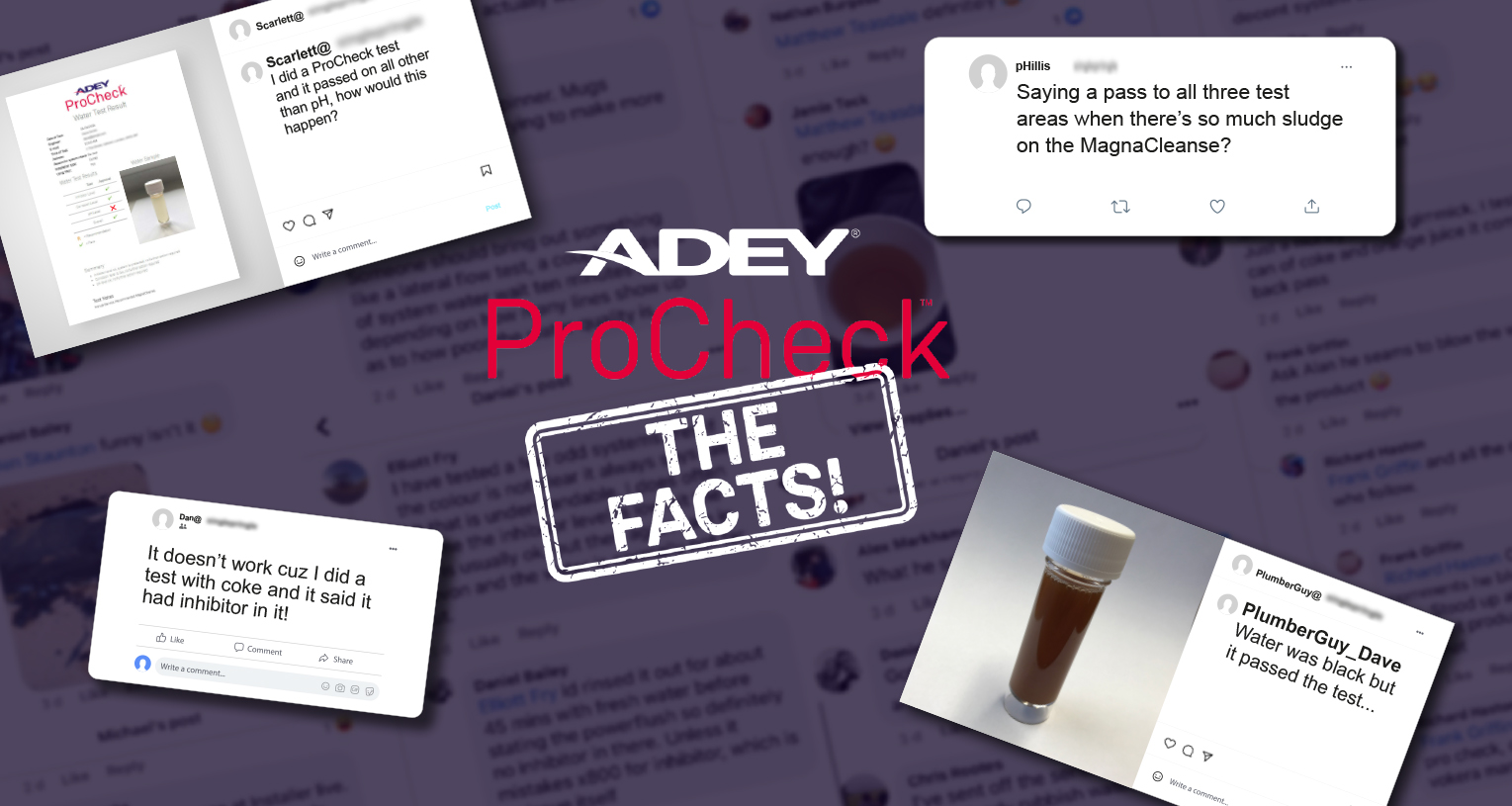Answering key questions
(and some not so key!)
on ADEY ProCheck®
ADEY ProCheck® was launched back in 2020, as the first
universal digital water test, giving instant lab-style results
and recommendations using a smartphone.
But how does it REALLY work?
Why is it giving me results that I didn’t expect and why
shouldn’t I test orange juice and expect a correct reading?
We've teamed up with James from Plumberparts to answer your posing questions about ProCheck... and the mother-in-law.
- WATCH THIS to
De-mystify ProCheck - Listen to James from Plumberparts and scientist
and Head of Chemistry Mo Jassal to find out exactly
how it works.
FAQ's
ProCheck is designed for testing system water for determination of key parameters and not coffee/juice/coke. These fluids are coloured and as ProCheck is based on colormetric testing using test strips, these are affected by coloured solutions and could lead to a meaningless results i.e. misinterpreted pass result.
Coloured brown water (mid flush) can discolour the test pads to give an incorrect result. This is why there is an initial visual turbidity check and is very important to make assessment correctly at this point to avoid a false colour change occurring on the test pad which can lead to a misinterpreted pass result.
The flow of water through radiators in a property can vary significantly and there may be radiators with very low flow, particularly on furthest radiators with incorrect balancing. There may be localised conditions occurring within these rads (eg very low flow can lead to increased corrosion) which have different water conditions and can lead to different results. We recommend the central part of the system is selected with the radiators valves fully opened to ensure a representative sample of the flowing system water is taken from the top of the radiator.
Ingredients in inhibitor formulations may be used quickly particularly if there is high solids present in the system e.g. sludge in the bottom of a radiator. Debis and solids have a high surface area and can absorb inhibitor quickly and in these instances, there could be a low-level reading on inhibitor within a few weeks. The addition of an inhibitor into the vial will give an extremely high level of inhibitor will push the test strip off the scale and will provide a misinterpreted result.



